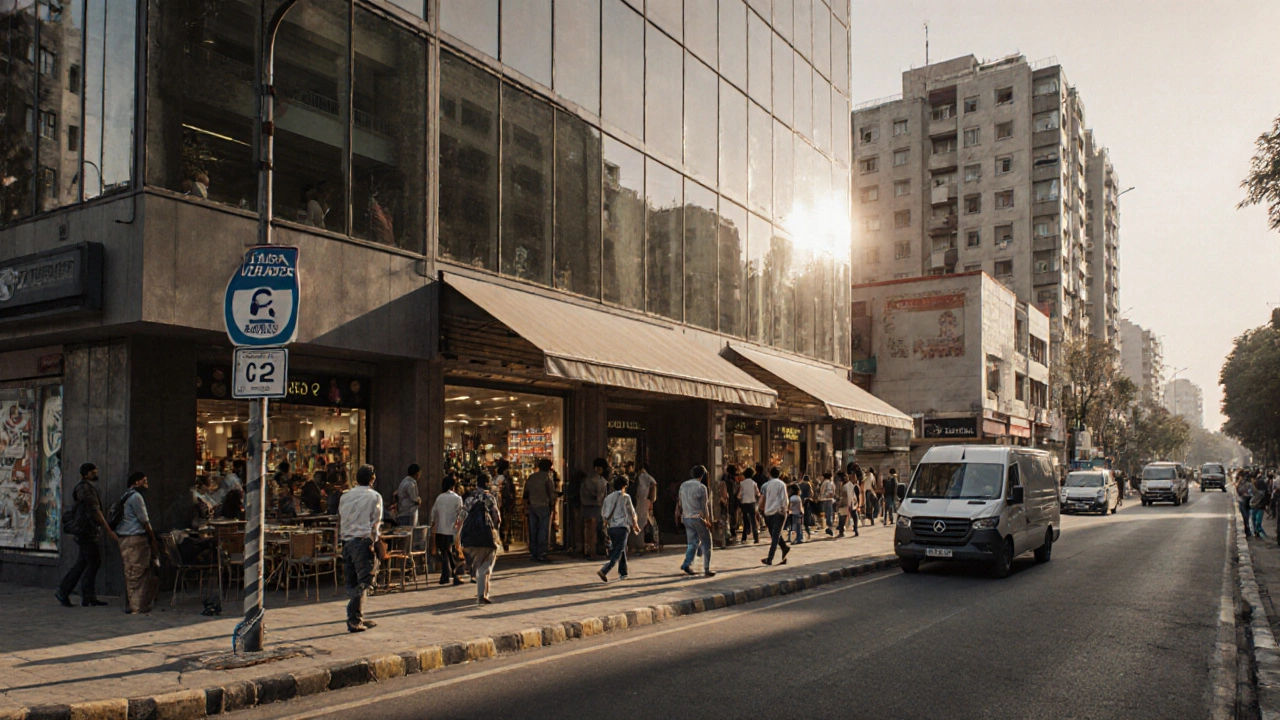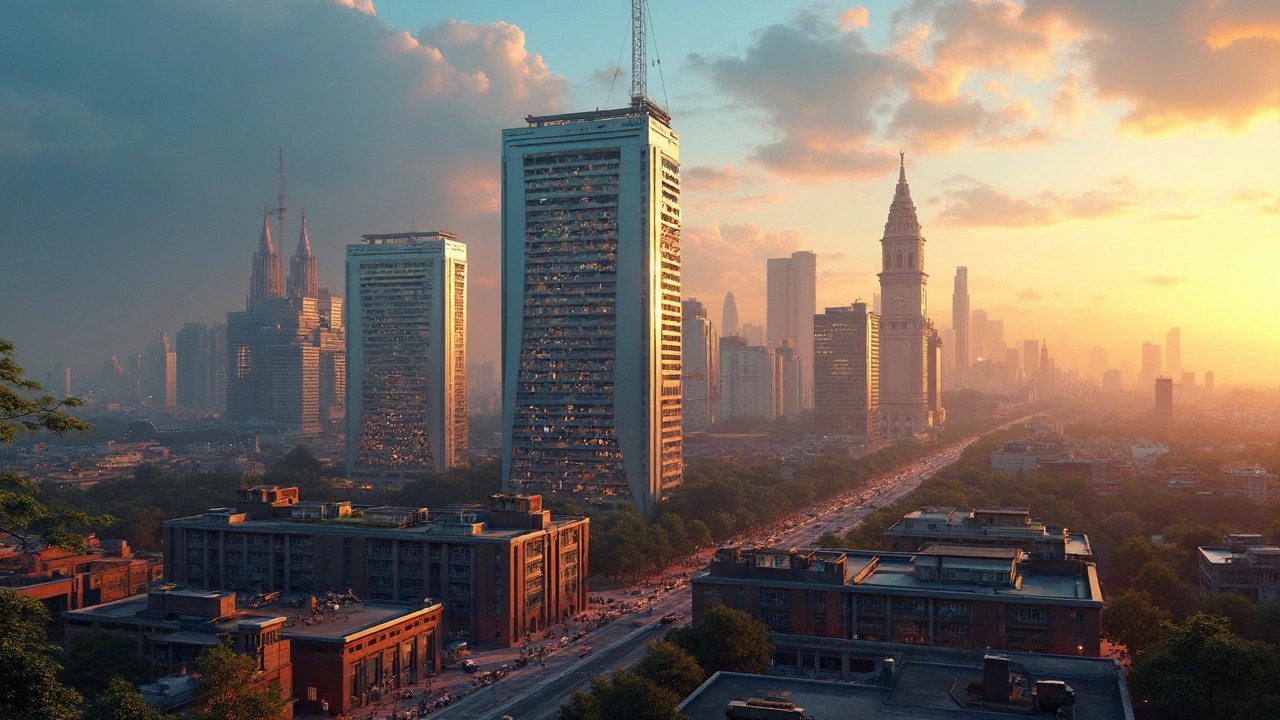Understanding the Differences Between Industrial and Commercial Construction
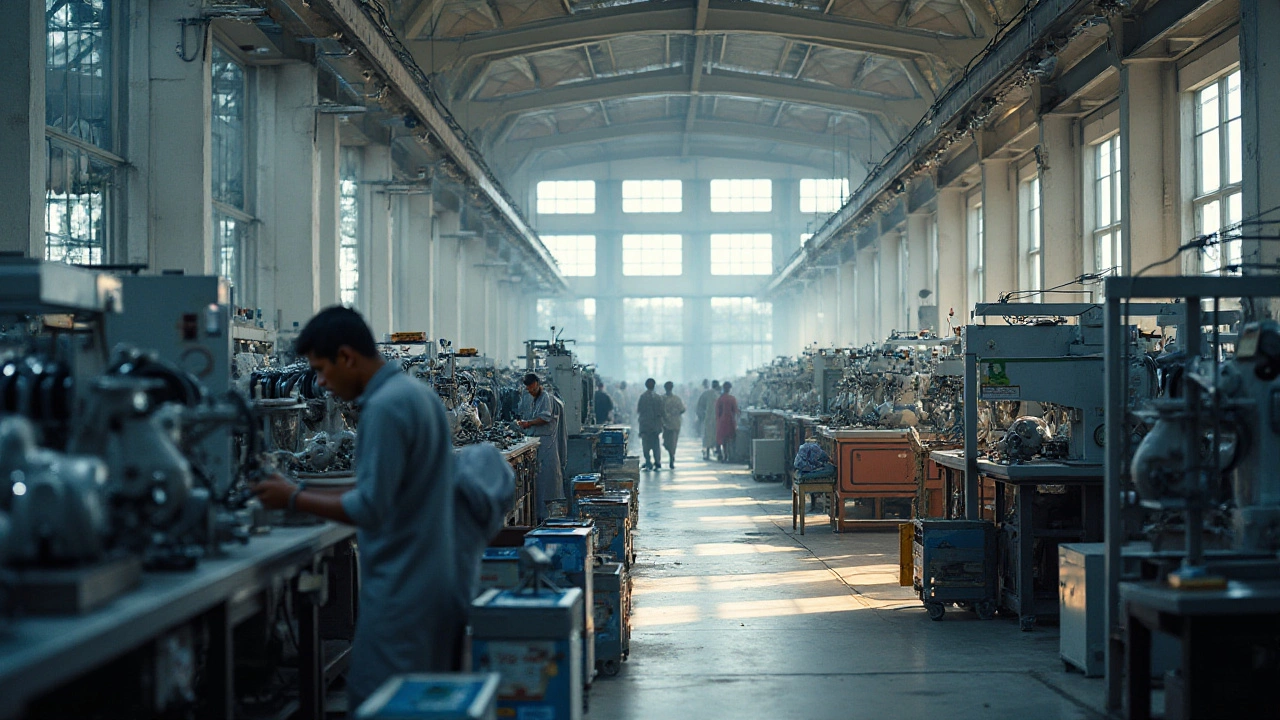
In the world of construction, terms like 'industrial' and 'commercial' are frequently tossed around, often interchangeably by those unfamiliar with the intricacies. But for anyone considering a construction project, knowing the difference is crucial. Each type addresses unique needs and requires distinct expertise and resources.
Industrial construction generally involves facilities where goods are manufactured or processed. Think factories, power plants, and warehouses, all of which are essential to keeping the wheels of industry turning. On the flip side, commercial construction covers a broad spectrum of properties used for engaging in commerce, such as shopping malls, office buildings, and restaurants.
Understanding these differences is not just academic—it's practical. From the materials used, to the design considerations, and even the timelines involved, each type of construction has its own set of rules and challenges. As we delve deeper into these sectors, you'll find insights and practical tips to guide your decisions, whether you're stepping into a construction project or simply curious about these fascinating fields.
- Defining Industrial Construction
- Understanding Commercial Construction
- Key Differences Between Industrial and Commercial Construction
- Specialized Techniques and Materials
- Trends and Innovations in Construction
- Tips for Choosing the Right Construction Type for Your Project
Defining Industrial Construction
Industrial construction is an expansive domain within the building industry that specializes in creating spaces geared towards production and manufacturing activities. When we think about industrial construction, images of sprawling factories, complex refineries, and towering power plants come to mind. These facilities are integral to the backbone of our economy, transforming raw materials into the goods we use every day. The importance of industrial construction lies not just in its scale, but in its intricate design requirements. Unlike commercial structures, industrial projects often demand custom, purpose-built facilities suited to particular industrial processes, which may include specialized machinery and systems. A unique aspect of this sector is the significant emphasis on durability and efficiency, ensuring that these industrial bastions can withstand the challenges of extreme production environments.
Another defining feature of industrial construction is the complexity of its design and engineering processes. The work involves multiple engineering disciplines working together to achieve a highly optimized facility. Mechanical, electrical, and structural engineers collaborate to ensure every component works in harmony. The safety standards in industrial construction are exceptionally high. Industrial sites must meet stringent health and safety regulations due to the hazardous nature inherent in many manufacturing processes. According to OSHA, the Occupational Safety and Health Administration, continuous safety assessments are mandatory for these projects. This level of oversight ensures minimal risk to the workers, though it adds layers of complexity and regulation to the construction phase.
"Industrial construction projects often require an intricacy of design that ensures both safety and efficiency. It's about more than just building—it’s about engineering a space that will support the machinery and people that drive our economy forward." - Construction Industry Expert
From the ground upwards, industrial constructions are a testament to human ingenuity and problem-solving. Prioritizing functionality over aesthetics, these structures are designed with an eye towards the specific needs of the businesses they serve. For instance, the layout of a production floor is often dictated by the flow of materials, requiring the design team to understand the client's manufacturing processes deeply. An interesting facet of industrial construction is the increasing use of technology to streamline operations and enhance precision. Technology like Building Information Modeling (BIM) allows for more detailed and accurate planning, which can shorten construction timelines and reduce waste.
Material selection in industrial construction is yet another layer where attention to detail is crucial. The materials chosen must withstand the rigors of the industrial processes they will house. Metals, composites, and chemical-resistant fabrics might all be incorporated depending on the specific needs of the industry. The choice of materials also impacts the cost, longevity, and environmental sustainability of the project. According to a study by the Construction Specifications Institute, 80% of a building’s lifetime exposure to environmental stressors is determined by decisions made during the design and planning phases. Therefore, project managers need to make informed choices that align with both the client’s operational needs and long-term sustainability goals.
With its robust and multifaceted nature, industrial construction is an arena where expertise and innovation collide. Whether you are directly involved in such a project or merely interested in the nuances of the construction world, understanding the intricacies of this field offers a valuable perspective on the infrastructure that supports modern industry. As we advance into the future, the ongoing evolution of materials, regulations, and technology will continue to shape the sector in intriguing ways, presenting new challenges and opportunities for professionals in the field.
Understanding Commercial Construction
Commercial construction is a vital segment of the building sector, encompassing a wide array of projects designed for commercial purposes. These projects range from small renovations and expansions of existing spaces to large-scale developments like skyscrapers and shopping centers. The primary focus of this construction type is to create spaces that serve commerce-related activities, which means designing and building facilities that are attractive to businesses and their customers. Think of malls bustling with shoppers, office buildings buzzing with professionals, and hotels welcoming guests from around the world. Each project requires a strategic approach that considers not only the physical structure but also its functionality, attractiveness, and compliance with regulations.
One of the key characteristics of commercial construction is its diversity. No two projects are exactly alike, even if they serve similar purposes. Every new build or renovation must consider the unique needs of its future occupants. For instance, the construction of a boutique hotel will prioritize different aspects than that of a corporate office tower, from aesthetic choices to the layout plans. Industry regulations, zoning laws, and sustainability demands further add layers of complexity, necessitating expertise that understands both the art and science of building design.
According to a report by the International Monetary Fund, the construction sector, particularly commercial construction, continues to bolster economies worldwide, serving as both a job creator and a critical infrastructure provider. It's no surprise, then, that innovations in this field can have widespread implications. As urban centers expand, their skylines often change, with new structures demanding cutting-edge technologies for energy efficiency, smart building solutions, and enhanced safety features. With an increased focus on sustainability, many projects prioritize green building strategies, striving for certifications like LEED and BREEAM, which promote environmentally friendly and resource-efficient construction.
"The commercial construction industry is a reflection of our economic foresight and cultural values, constantly evolving to meet the needs of businesses and society," says a report by the Global Construction Review.
To add further perspective, consider the roles within a commercial construction project. A vast team of professionals comes together to make it happen, including architects, engineers, project managers, and a plethora of tradespeople. From the initial consultation to the ribbon-cutting ceremony, each phase demands a collaborative spirit and expert insight. Choosing the right materials, sticking within budgets, and navigating bureaucratic hurdles are daily challenges that require meticulous planning and execution.
Last but not least, technology's role in this domain cannot be understated. From 3D modeling software that allows architects to visualize projects before breaking ground, to drones and AI-driven tools that enhance safety and efficiency on construction sites, technology has become an indispensable ally. As we move deeper into the 21st century, innovations like these ensure that commercial construction not only meets the demands of today but is primed for the challenges and opportunities of tomorrow. The future of commercial construction appears bright, with continuous adaptation and growth shaping our environments in novel and exciting ways.
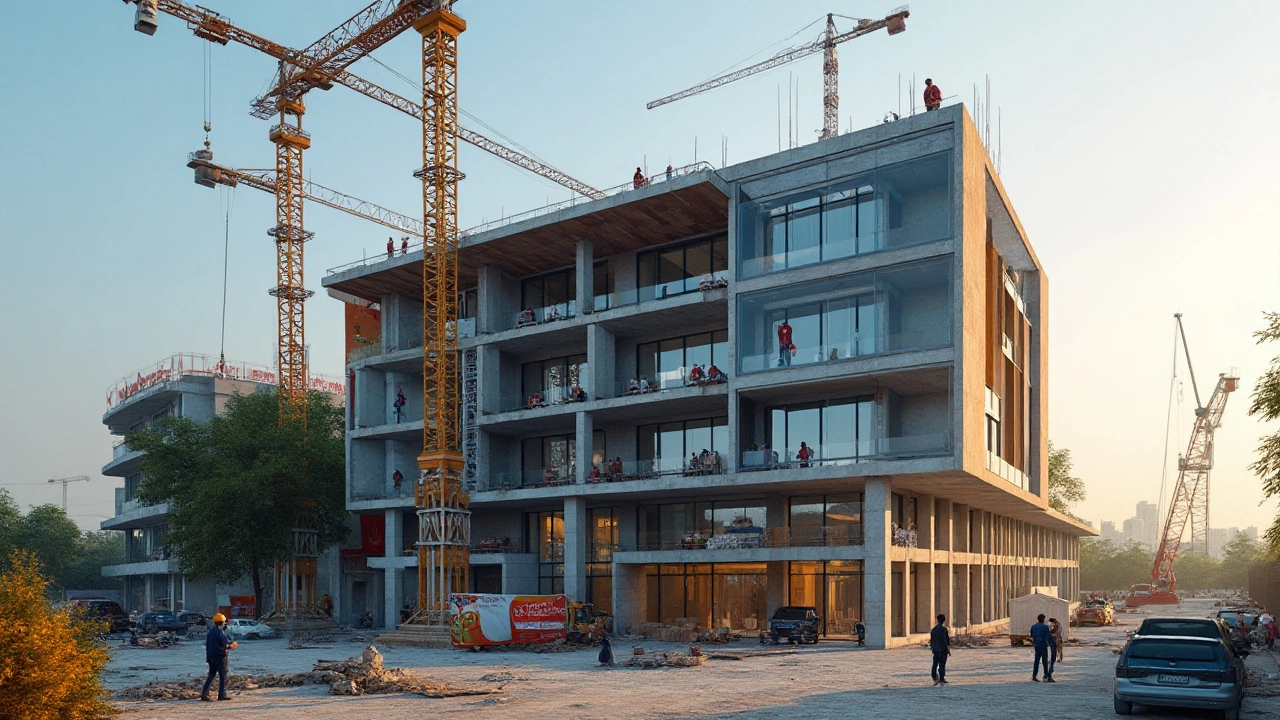
Key Differences Between Industrial and Commercial Construction
The worlds of industrial construction and commercial construction are distinct, each catering to different needs and functions. The most apparent difference lies in their purpose: industrial construction is primarily about the creation of spaces where goods are produced, stored, or processed. This involves places like manufacturing plants, distribution centers, and robust facilities capable of housing heavy machinery. These projects need rigorous structural integrity and often have intricate requirements in terms of electrical wiring, plumbing, and air quality control, catering to the specific needs of industries. In contrast, commercial construction focuses on spaces where transactions occur, whether that's through selling goods, offering services, or hosting offices.
Purpose and Design
Purpose fundamentally influences design in both industrial and commercial construction. Industrial sites are engineered to handle intense workloads, host complex machinery, and often accommodate large teams of workers. The priority here is functionality and safety, with everything designed to optimize production workflows and ensure robust safety measures. Careers in this field require unique expertise and attention to detail. On the flip side, commercial buildings often emphasize aesthetics to attract customers or clients. Think about a sleek office building in the city center or a vibrant shopping mall buzzing with activity. The materials and layout are often chosen for their visual appeal as much as their practicality.
Regulatory Requirements
The regulatory landscape also diverges between these two types of construction. Industrial construction projects often have to comply with an array of stringent regulations surrounding worker safety, environmental impact, and machinery operations. Compliance with regulations can often be complex and requires a team knowledgeable in the nuances of laws and standards, such as those laid out by the Health and Safety Executive (HSE) in the UK. Meanwhile, commercial buildings must adhere to zonal codes that emphasize accessibility, aesthetics, and business operations. Examples include regulations ensuring that modern shopping centers are all accessible and provide facilities catering to a diverse clientele. The importance of understanding these differing regulations cannot be understated, as they directly impact the project's timeline and costs.
"Industrial and commercial construction serve different ends and hence demand varied expertise when approached. The techniques used in these fields, though sometimes overlapping, have to be informed by the core purpose of their projects." – Arthur Constance, Construction Expert.
Engineering and Materials
Engineering and materials utilized in these construction types also signify their differences. Industrial spaces demand materials that can withstand extreme conditions—heat, weight, movement—often necessitating steel, concrete, and specialized composite materials. Industrial sites sometimes integrate smart technology, allowing machinery to communicate or be remotely monitored. Commercial sites might favor materials that offer a blend of durability and appeal, like glass that creates inviting environments or innovative lighting solutions that enhance the retail experience. Engineering for industrial construction can involve substantial earth-moving activities and installation of heavy-duty utilities. Conversely, commercial construction might incorporate aesthetic aspects such as designer interiors, attractive facades, and sustainable materials.
Budget and Cost Implications
One cannot discuss these construction types without delving into costs and budgeting implications. Industrial construction projects, due to their intensity and the equipment involved, can be exceptionally costly. High specialization means hiring skilled professionals to manage specific installations like high-pressure steam lines or advanced HVAC systems. Commercial construction is more varied, with budgets ranging significantly based on location, design choices, and materials. An office in a metropolitan area will demand a different approach and budget consideration compared to a local shopping center.
These distinctions serve as an essential roadmap, guiding what kind of specialists to engage, understanding potential challenges, and setting expectations for projects. Recognizing and acknowledging these differences is crucial for anyone looking to venture into the world of construction, ensuring that they make well-informed decisions aligned with their goals and resources.
Specialized Techniques and Materials
When it comes to the industrial construction sector, one cannot overlook the critical role that specialized techniques and materials play in ensuring the finished product meets stringent safety and efficiency standards. Industrial facilities often require robust frameworks that can withstand the rigors of intense operational stress. This entails the use of reinforced concrete and steel frameworks that are not only strong but durable, capable of supporting heavy machinery and complex production lines. The need for sustainability has also driven the adoption of advanced composite materials that offer both strength and reduced environmental impact.
Commercial construction, on the other hand, often emphasizes aesthetics alongside functionality. Here, architects and builders work together to create structures that appeal to consumers while serving their intended commercial purposes. It involves the integration of sleek glass facades and innovative roofing solutions that harmonize beauty with energy efficiency. Commercial buildings may not require the same heavy-duty frameworks as their industrial counterparts, but they do demand versatility in design to cater to diverse business needs, from retail spaces to office complexes.
Understanding Techniques
The techniques employed differ significantly between the two sectors. For industrial sites, precision and stability are paramount. Methods such as prefabrication are increasingly popular, where elements are constructed off-site and assembled on-site, minimizing disruptions and enhancing precision. Meanwhile, in commercial construction, adaptive reuse and modular construction techniques have gained traction. By repurposing old buildings or using prefabricated modules, developers can save time and resources while injecting life into urban spaces.
According to a leading industry report, "The use of prefabricated concrete in industrial projects has reduced project timelines by up to 30%, enhancing productivity and reducing labor costs." This shift not only highlights the potential for cost savings but also reflects an ongoing evolution towards more efficient building practices.
Materials in Focus
The choice of materials often dictates the success of construction projects. Industrial construction frequently utilizes high-performance materials like stainless steel and aluminum alloys, prized for their resilience against corrosion and extreme temperatures. Specialized coatings and fireproofing materials are also essential to meet safety regulations and ensure long-term operability. In contrast, commercial buildings often incorporate eco-friendly materials such as bamboo flooring or solar panels, aligning with a broader trend towards sustainability and green building standards.
Data on material trends reveal interesting patterns:
| Material | Industrial Usage (%) | Commercial Usage (%) |
|---|---|---|
| Reinforced Concrete | 75 | 30 |
| Glass Facades | 20 | 60 |
| Prefabricated Modules | 25 | 50 |
| Eco-Friendly Alternatives | 15 | 55 |
This overview helps elucidate not only the distinct needs dictated by the type of construction but also the broader industry trends that are shaping how and with what projects are built. Ultimately, the successful execution of any construction project hinges upon the judicious choice of techniques and materials, tailored to the project's unique requirements and objectives.
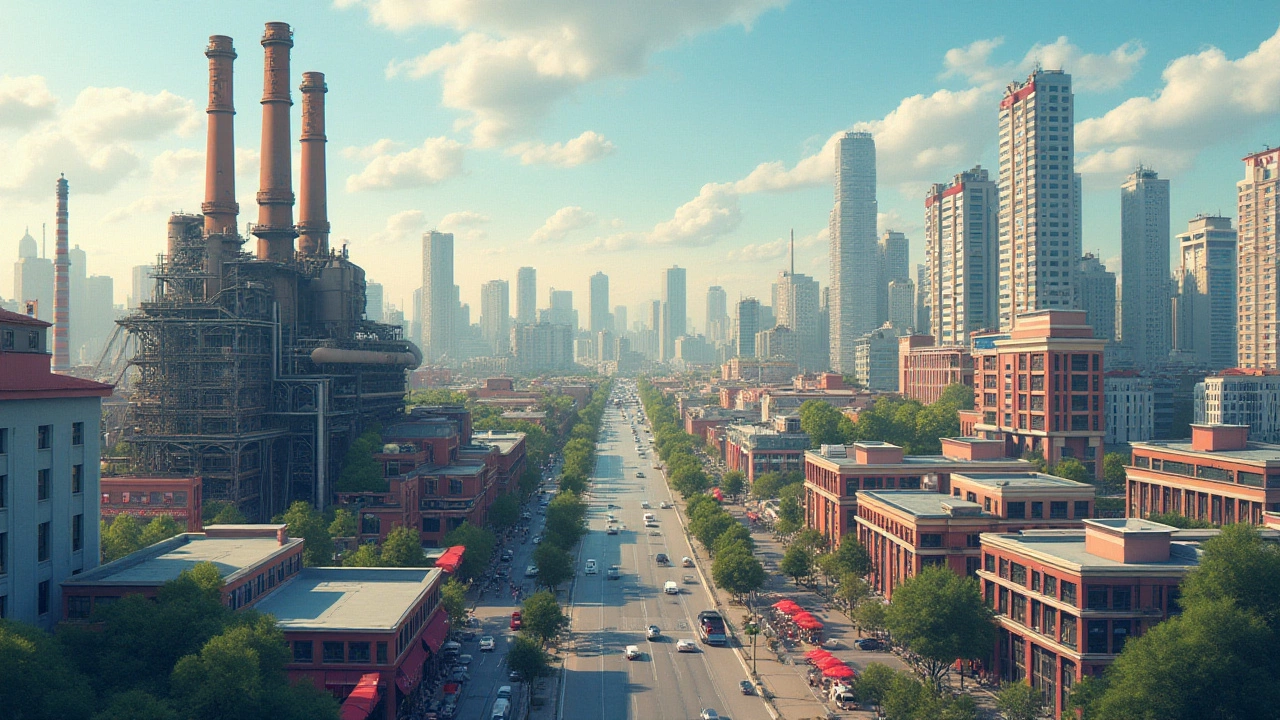
Trends and Innovations in Construction
The world of construction is constantly evolving, adapting to new demands and integrating cutting-edge technologies. One of the most significant trends in recent years is the advent of smart buildings. With the growing emphasis on sustainability, these structures use technology to reduce energy consumption and improve efficiency. Sensors and IoT devices have become commonplace, helping to manage everything from climate control to security systems. In an era where resources are limited, these innovations ensure that buildings are not only intelligent but also environmentally conscious.
Another key trend is the use of prefabrication techniques. By constructing components of a building in a factory setting, builders can save both time and costs. Not only does this method reduce waste, but it also increases precision in the building process. Moreover, prefabricated buildings offer flexibility, allowing for modifications even during the construction phase. This approach has been particularly beneficial in the commercial construction sector, where speed and adaptability can be crucial to a project's success.
Material innovation is also driving change, with sustainable options like cross-laminated timber (CLT) gaining popularity. CLT is an eco-friendly alternative to traditional materials and offers impressive strength and versatility. Notably, CLT structures can be erected quickly, making it a favorite choice among architects and builders. The push for sustainability doesn't stop at materials—there's also a focus on renewable energy integration. Many commercial buildings now incorporate solar panels and wind turbines, contributing to a greener planet.
The digital revolution has not left the industrial construction sector untouched. The use of Building Information Modeling (BIM) has transformed how projects are planned and executed. BIM technology enables all stakeholders to visualize the entire project in a 3D digital environment, significantly reducing errors and improving collaboration. According to the UK's Construction Sector Deal, leveraging BIM could potentially increase productivity by 15-25%, illustrating its immense value to the industry.
"The future of construction lies in how we adapt to and integrate new technologies, enhancing efficiency while respecting our planet," noted Chris Blythe, CEO of a leading construction trade body.
Robotics and automation are making waves too, particularly in repetitive and hazardous tasks. Drones, for instance, are used to inspect sites, providing real-time data that's crucial for decision-making. Similarly, robotic equipment can perform tasks with greater precision and safety, reducing the risk of accidents. These advancements are not only making construction sites safer but are also leading to faster project completion times.
Lastly, 3D printing is increasingly being recognized for its potential to revolutionize the construction industry. The ability to 'print' building components directly on-site not only minimizes waste but also allows for the creation of complex designs previously unimaginable with standard techniques. Though still in its early stages, the scope for 3D printing in both industrial and commercial construction is vast, promising a future where structures can be customized to meet specific aesthetic and functional demands.
Tips for Choosing the Right Construction Type for Your Project
Choosing between industrial construction and commercial construction for your next big project involves more than just a surface-level decision. It requires a keen understanding of your specific needs, financial implications, and long-term goals. One fundamental factor to consider is the nature of your operations and how the physical space will support them. Industrial spaces, for example, are ideal for massive equipment and operations that demand large-scale layouts and advanced technological systems. In contrast, if your work revolves around customer interaction or office-based activities, commercial construction might be better suited.
It's crucial to engage with experienced architects and contractors who understand the intricacies of both types of constructions. An adept professional will help identify major functional needs unique to your industry and suggest efficient designs that maximize utility. Regulatory compliance must also be on your radar. While industrial and commercial projects share some regulatory requirements, industrial construction typically demands stricter adherence to standards due to higher potential risks. This involves understanding zoning laws, safety regulations, and environmental considerations that affect the project's planning and execution.
Cost is often a decisive element in any construction project. Understanding the budgetary requirements of industrial construction compared to its commercial counterpart is essential. Industrial sites often require heavy-duty materials, specialized equipment, and specific technical expertise, which may escalate costs. Keeping an eye on innovation can also influence decision-making. With technology advancing, new materials and construction methods become available, offering opportunities for cost savings, efficiency gains, and environmental benefits, often appearing more frequently in commercial construction projects.
"The key to a successful construction project is starting with clear goals and a comprehensive assessment of all needs," says Alan Rogan, a seasoned construction analyst. "From there, everything, including the choice between industrial and commercial construction, falls into place."
Explore emerging trends and innovations in both sectors to ensure the best outcome for your project. Adaptability is key. The construction industry is ever-evolving, with new trends shaping materials and methods. Pay attention to the latest architectural designs, environmental sustainability practices, and technological integrations in both industrial construction and commercial construction. Utilizing renewable energy solutions or smart building technologies, for instance, can greatly enhance the functionality and sustainability of your project.
Finally, take time to study successful case studies or precedents within your industry. Examine what has worked for similar businesses and what hasn't, which can provide valuable insights and avert potential pitfalls. Analyzing previous projects can give you a clearer picture of the expected outcomes and potential challenges you might face.
